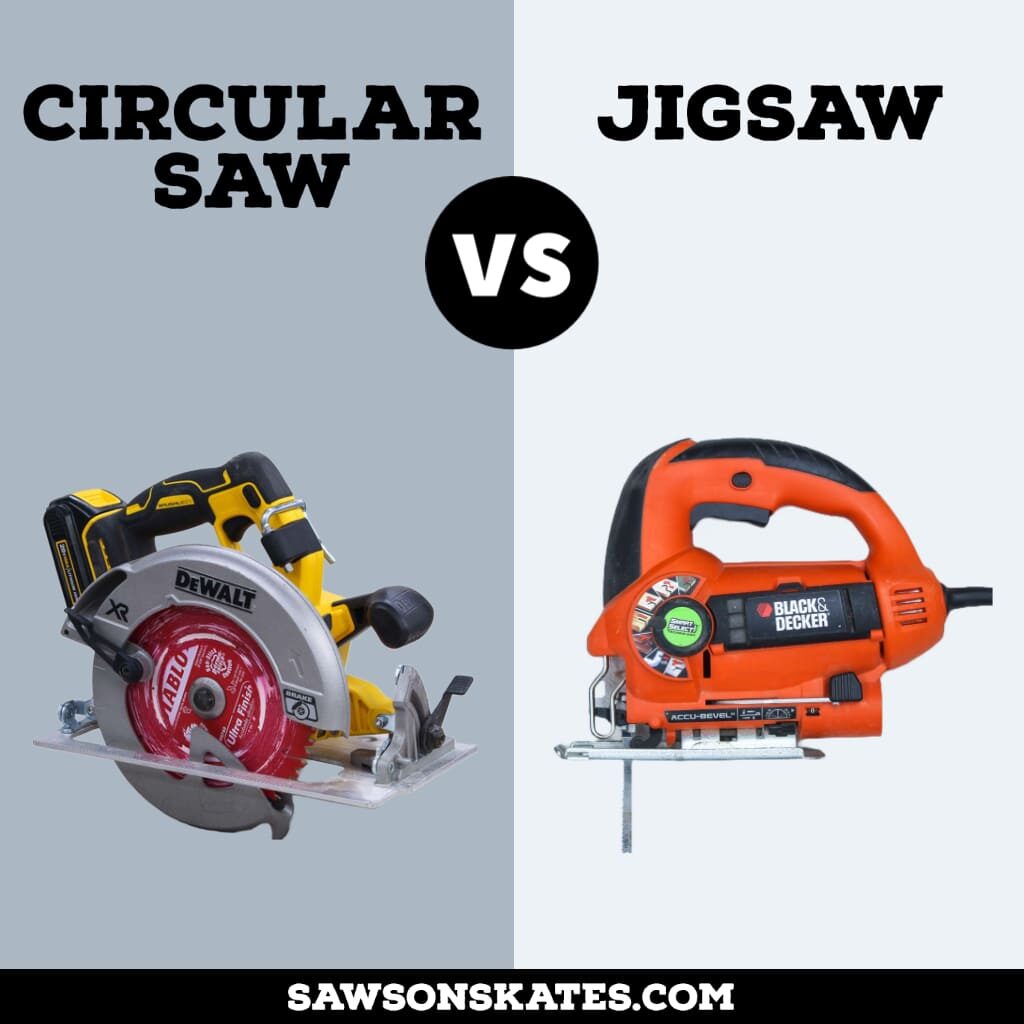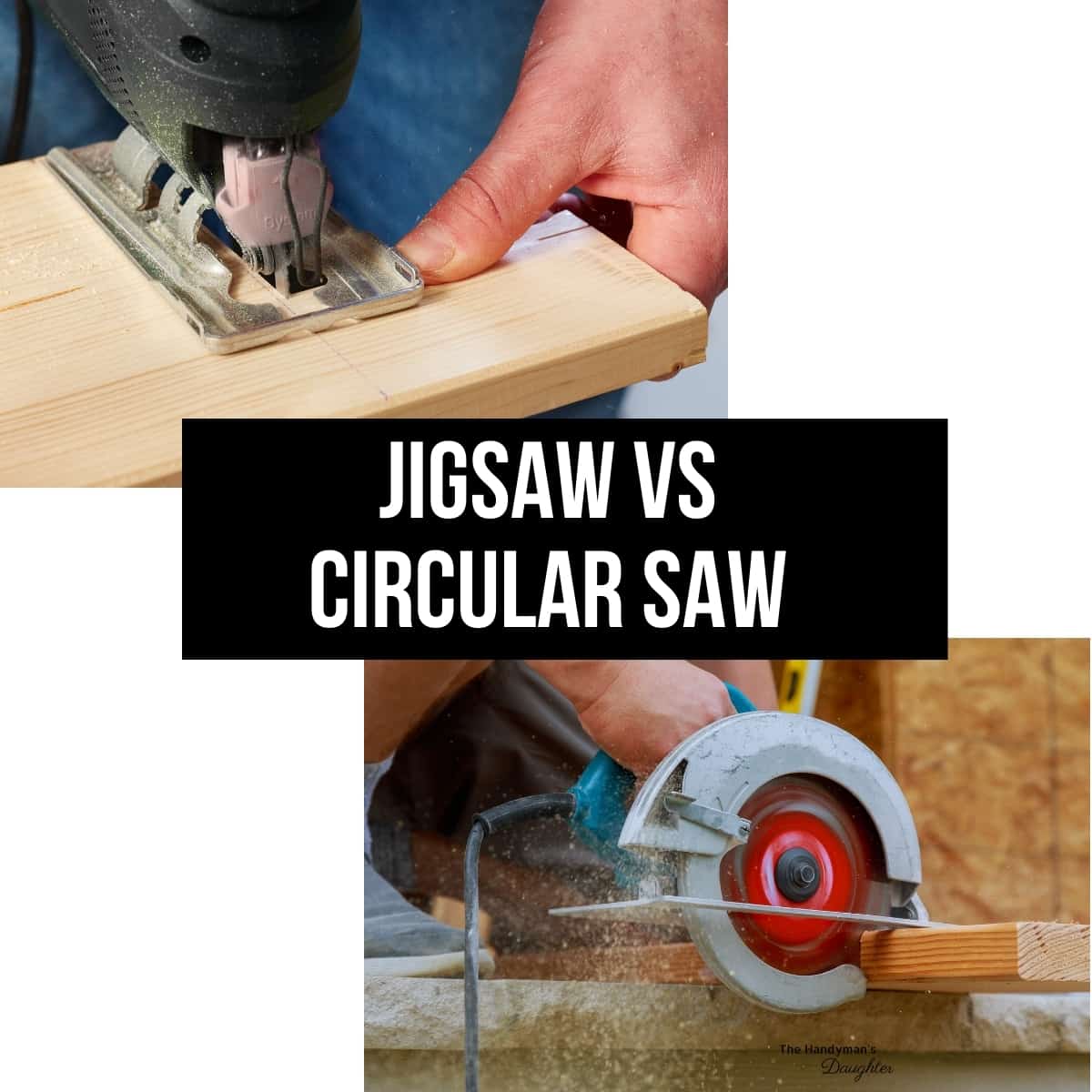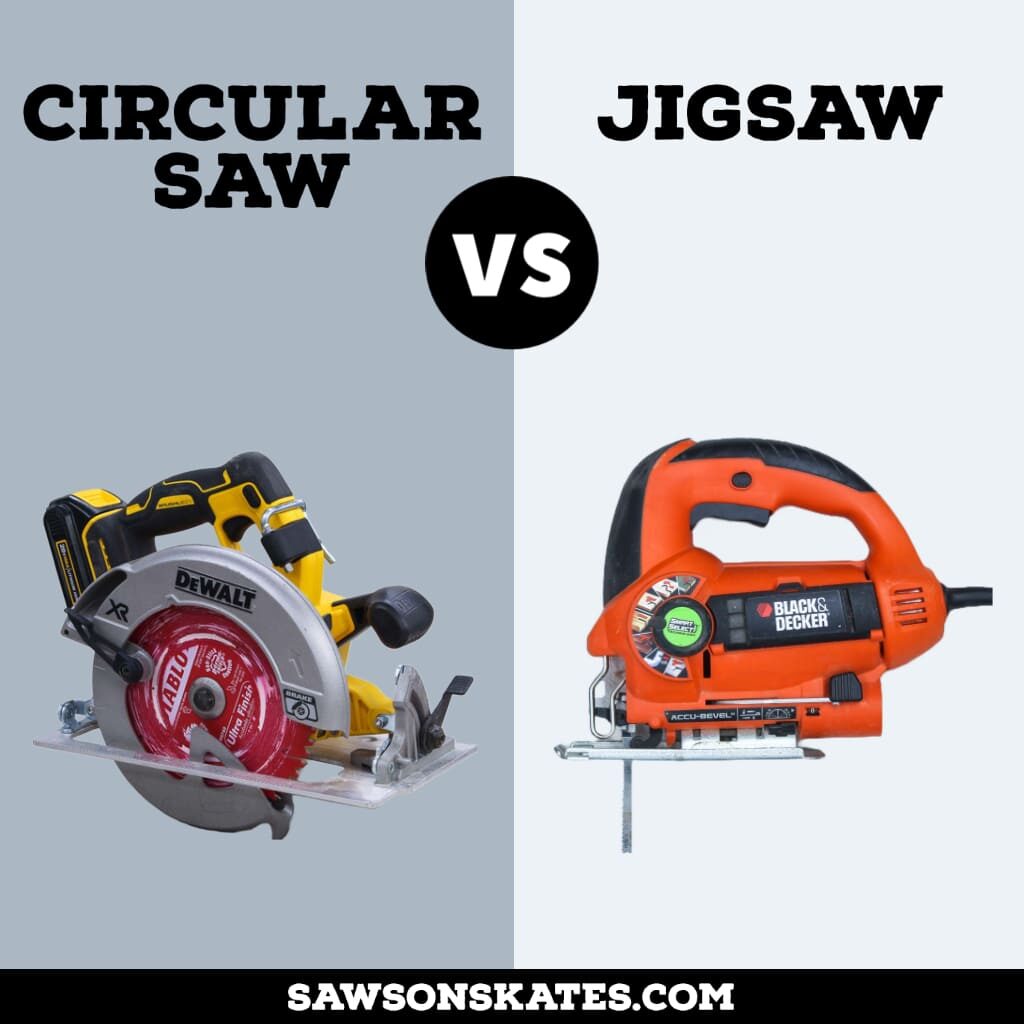If you’re wondering which tool is better for your woodworking projects – a jigsaw or a circular saw – you’ve come to the right place! Today, we’re going to dive into the exciting world of power tools and explore the differences between these two popular options. Whether you’re a DIY enthusiast or just starting your woodworking journey, we’ll help you understand which tool is the right fit for your needs. Let’s get started!
Have you ever found yourself standing in the tool aisle, contemplating whether you should invest in a jigsaw or a circular saw? Well, fret not, my friend, because we’re here to demystify the dilemma for you. Jigsaws and circular saws are both versatile power tools that can make your woodworking tasks a breeze. But which one should you choose? Fear not, as we walk you through their unique features and applications, helping you make an informed decision.
So, buckle up and get ready to carve, cut, and create with confidence. By the end of this article, you’ll have a clear understanding of the pros and cons of each tool, allowing you to make an educated choice. Whether you’re itching to tackle intricate cuts with a jigsaw or need the power of a circular saw for straight, long cuts, we’ve got you covered. Let’s dive into the world of jigsaws and circular saws and discover which tool reigns supreme for your woodworking adventures.
Deciding between a jigsaw and a circular saw depends on your specific needs. Both tools have unique features that make them useful in different situations. The jigsaw is great for intricate cuts and curves, while the circular saw excels at straight cuts and ripping. Additionally, the jigsaw offers better maneuverability, allowing you to make intricate cuts with ease. On the other hand, the circular saw provides more power and is better suited for heavy-duty tasks. Consider your project requirements before choosing the tool that is right for you.

What is Better: Jigsaw or Circular Saw?
In the world of power tools, two popular cutting tools often used in woodworking projects are jigsaws and circular saws. Both tools serve their purpose, but understanding the differences and advantages of each can help you make an informed decision on which one is better suited for your needs.
Jigsaw: The Versatile Cutting Tool
A jigsaw is a versatile handheld power tool that excels at making curved and intricate cuts. Its narrow blade moves up and down in a rapid reciprocating motion, allowing for precise control and maneuverability. With the right blade, a jigsaw can cut through various materials such as wood, plastic, metal, and even ceramic tiles.
One of the biggest advantages of a jigsaw is its ability to make intricate cuts, including curves and bevels. This makes it ideal for projects that require detailed and artistic designs. Additionally, jigsaws are lightweight, portable, and easy to handle, making them a great choice for DIY enthusiasts and beginners.
However, jigsaws have their limitations. They are not as powerful as circular saws and may struggle with thicker or denser materials. The thin blades of jigsaws can also bend or break if not used properly. While jigsaws are versatile, they may not be the best option for projects that require long, straight cuts or heavy-duty tasks.
Circular Saw: The Straight Line Specialist
On the other hand, a circular saw is a powerful cutting tool designed primarily for making straight cuts. It consists of a circular blade that spins at high speeds and can quickly cut through different materials, especially wood. Circular saws are commonly used in construction and larger woodworking projects.
The main advantage of a circular saw is its ability to make accurate and long straight cuts. With a guide or fence, you can achieve precise results effortlessly. Circular saws also have more power and cutting depth compared to jigsaws, making them suitable for heavy-duty tasks and thick materials.
However, circular saws are bulkier and less maneuverable compared to jigsaws. They require a stable work surface and more effort to operate. Circular saws are also not suitable for making curved or intricate cuts. While they can make bevel cuts with an adjustable base plate, they are not as versatile as jigsaws in this aspect.
The Benefits of Using a Jigsaw
A jigsaw offers several benefits that make it a preferred choice for certain projects. Firstly, its ability to make intricate and curved cuts gives it an edge over a circular saw. This makes it suitable for woodworking projects that involve detailed designs, such as creating decorative patterns or cutting out shapes for furniture.
Secondly, jigsaws are lightweight and easy to handle, making them ideal for DIY enthusiasts and beginners. They require less physical effort to operate and are less intimidating compared to larger power tools like circular saws. Jigsaws are also portable, allowing you to work on projects in different locations.
Lastly, jigsaws are often more affordable than circular saws, making them a cost-effective choice for those on a budget. They are a versatile tool that can handle various materials, although not as efficiently as a specialized tool like a circular saw.
The Advantages of a Circular Saw
A circular saw’s main advantage lies in its power and ability to make long, straight cuts with precision. It excels in construction projects that require cutting through thick materials like plywood or lumber. The straight cuts made by a circular saw are often cleaner and more efficient, providing professional-looking results.
Another advantage of a circular saw is its versatility in terms of compatible blades. Depending on the type of blade used, a circular saw can cut through different materials such as wood, metal, or plastic. This makes it a versatile tool for a wide range of projects, not limited to woodworking alone.
Lastly, circular saws are capable of making bevel cuts by adjusting the angle of the blade or tilting the base plate. This feature allows for more design possibilities and angled cuts that may be required in certain projects.
Choosing the Right Tool for Your Project
The decision between a jigsaw and a circular saw ultimately depends on the nature of your project and the type of cuts you need to make. Here are a few key tips to help you make the right choice:
- Consider the type of cuts: If your project requires intricate designs, curves, or bevel cuts, a jigsaw would be the better option. If you primarily need straight cuts and work with thick materials, a circular saw is more suitable.
- Assess the level of portability: If you value portability and need a tool that can be easily transported to different locations, a jigsaw’s lightweight and compact design make it a convenient choice. However, if portability is not a concern, a circular saw’s power and cutting capacity may be more beneficial.
- Factor in your budget: If cost is a significant factor, jigsaws tend to be more budget-friendly compared to circular saws. However, keep in mind that circular saws offer more power and versatility, which may justify the higher price tag for certain projects.
Ultimately, both jigsaws and circular saws are valuable tools in their own right, offering unique advantages depending on the task at hand. By considering the type of cuts, portability needs, and budget constraints, you can make an informed decision and select the tool that best suits your specific requirements.
The Importance of Safety
Regardless of whether you choose a jigsaw or a circular saw, safety should always be a top priority. Here are some general safety tips to keep in mind when using power tools:
- Wear protective gear: Always wear safety glasses, ear protection, and gloves when operating power tools to protect against potential hazards.
- Follow the manufacturer’s instructions: Read and understand the user manual to ensure you are using the tool correctly and safely.
- Secure your workpiece: Use clamps or other securing methods to keep your workpiece stable and prevent unwanted movement during cuts.
- Keep your workspace clean and organized: Clear any debris or obstructions that may interfere with the tool’s operation or cause accidents.
- Disconnect the power: When changing blades or performing maintenance on the tool, always unplug it from the power source to prevent accidental starts.
- Be cautious of the blade: Always handle the blade with care, using appropriate tools and techniques to avoid accidental cuts.
By following these safety tips and using power tools responsibly, you can ensure a safer and more enjoyable woodworking experience.
Key Takeaways: Which is Better, a Jigsaw or Circular Saw?
- A jigsaw is better for intricate and curved cuts, while a circular saw is better for straight and long cuts.
- If you’re a beginner or working on small projects, a jigsaw may be more suitable due to its versatility.
- For heavy-duty and professional work, a circular saw offers more power and precision.
- Jigsaws are easier to control and maneuver, making them ideal for detailed woodworking projects.
- Circular saws are perfect for cutting through thick materials like plywood and lumber with speed and efficiency.
Frequently Asked Questions
Looking to decide between a jigsaw and a circular saw but not sure which one is better? We’ve got you covered! Check out these common questions and answers to help you make an informed choice.
1. Which saw is better for making curved cuts?
If you’re looking to make curved cuts, a jigsaw is your best bet. Thanks to its thin blade and ability to cut in different directions, a jigsaw allows for smooth and precise curved cuts. It’s perfect for projects like cutting out shapes or creating intricate patterns.
On the other hand, a circular saw is more suited for straight cuts. It has a larger and thicker blade, designed to cut through thicker materials in a straight line. While it can make beveled and angled cuts, it may not offer the same level of control and accuracy as a jigsaw for curved cuts.
2. Which saw is better for cutting through thick materials?
If you’re working with thick materials, like plywood or hardwood, a circular saw is the better option. Its powerful motor and large blade allow it to cut through thicker materials with ease. The straight-line cutting ability of a circular saw makes it ideal for construction projects or tackling larger pieces of wood.
A jigsaw, on the other hand, is better suited for thinner materials. Its thinner blade may struggle with thicker materials, causing it to vibrate or wander off the desired cutting line. While it can still make cuts in thicker materials, it may require more time and effort compared to a circular saw.
3. Can a jigsaw or circular saw be used for plunge cuts?
Both a jigsaw and a circular saw can be used for plunge cuts, but they have different strengths. A jigsaw is particularly well-suited for plunge cuts due to its ability to easily change directions. This makes it great for tasks like cutting out openings for sinks or creating starter holes for interior cuts.
On the other hand, a circular saw is not typically used for plunge cuts. It is designed to cut in straight lines and doesn’t offer the same maneuverability as a jigsaw. While it’s possible to make plunge cuts with a circular saw, it may require additional tools or techniques to achieve accurate results.
4. Which saw is safer to use?
Both the jigsaw and circular saw have their safety considerations, but when used correctly, they can be safe tools. It’s important to follow proper safety guidelines, such as wearing safety glasses, using the appropriate blade for the material, and securely clamping the workpiece before cutting.
That being said, a jigsaw is generally considered safer for beginners or those who are less experienced with power tools. Its smaller size, lighter weight, and slower cutting speed make it more manageable and less likely to cause accidents compared to a circular saw with its larger blade and faster cutting speed.
5. Can a jigsaw or circular saw be used for different materials?
Both the jigsaw and circular saw can be used for a variety of materials, but each has its strengths. A jigsaw excels at cutting through materials like wood, plastic, and thin metals. It’s a versatile option for intricate cuts and detailed work.
A circular saw, on the other hand, is better suited for cutting through thicker materials like lumber, plywood, or even concrete with the right blade. It’s a powerful tool for straight cuts and is commonly used in construction and woodworking projects.

Summary
When it comes to choosing between a jigsaw and a circular saw, it really depends on what you need to do. If you want to make intricate cuts or work with different materials like metal or plastic, a jigsaw may be the better choice. It allows for more flexibility and precision. On the other hand, if you need to make long, straight cuts on lumber or plywood, a circular saw is your go-to tool. It’s powerful and efficient for those kinds of tasks. Ultimately, both saws have their own strengths and it’s important to consider your specific needs before making a decision.
